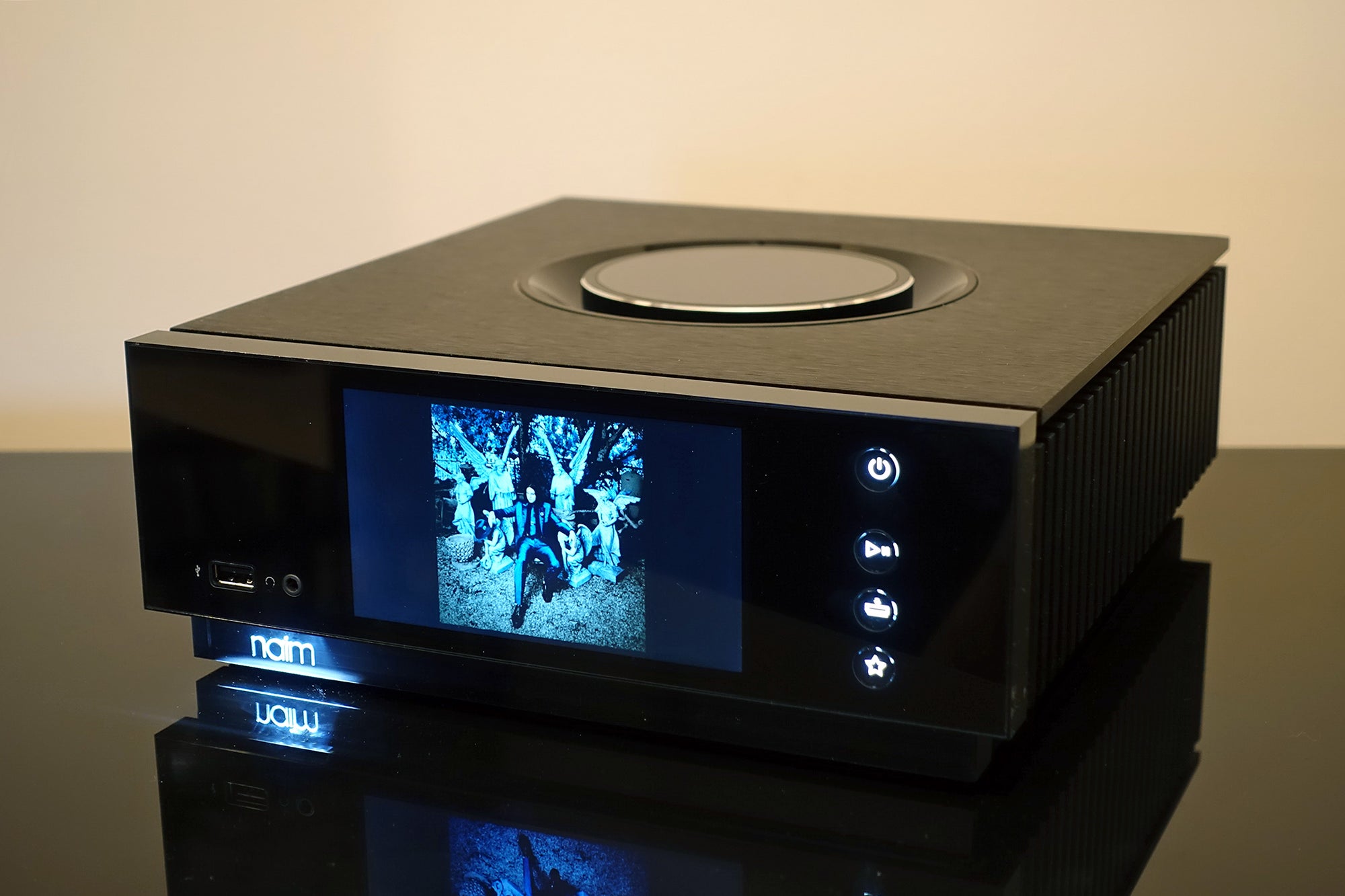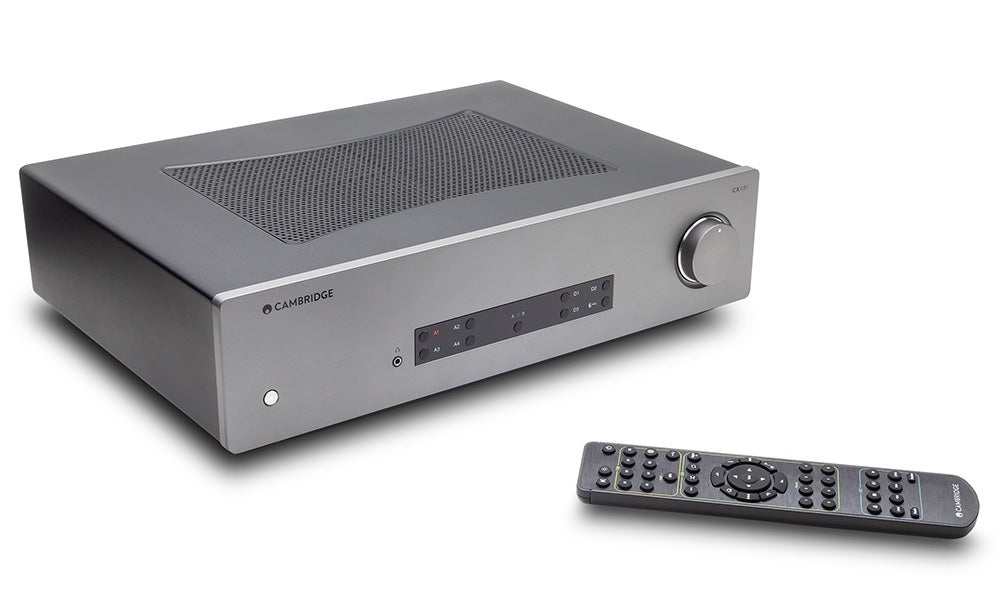Bluesound Node (2021) Review
A compact and affordable high-resolution audio and multi-room capable music streamer
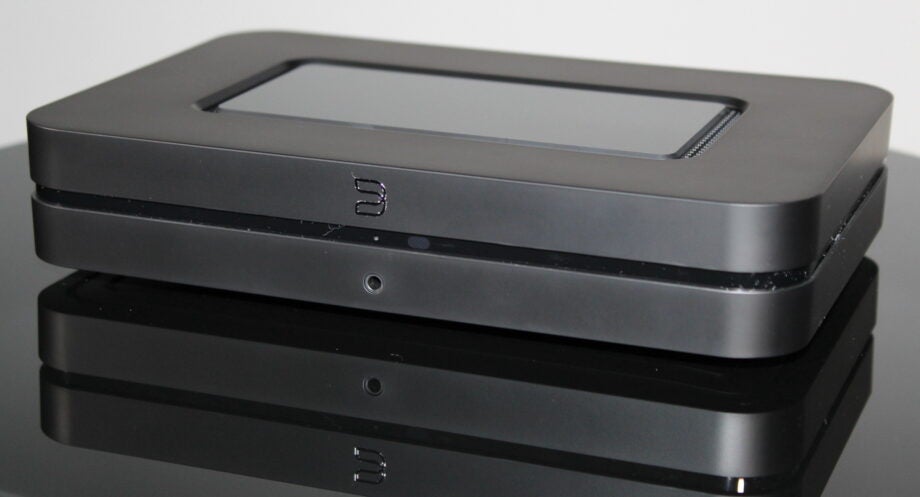

Verdict
Wi-Fi your Hi-Fi with this compact, affordable and effective wireless streamer. The BluOS app and extensive connectivity make setup simple and flexible, while an audiophile DAC and quad-core processor delivers top-notch audio.
Pros
- Superb all-round performance
- Excellent suite of features
- Easy to setup and use
- Sleek and well made
Cons
- No remote control included
- No DSD support
Availability
- UKRRP: £549
- USAunavailable
- EuropeRRP: €549
- Canadaunavailable
Key Features
- Audiophile-grade processingTexas Instruments PCM 5242 DAC and ARM Cortex A53 quad-core processor
- Hi-res music streamingSupport up to 24-bit/192kHz plus MQA
- BluOS operating systemMulti-room functionality and Controller App
- Physical connectivityHDMI eARC; digital and analogue inputs and outputs; USB; Ethernet
- Wireless connectivityDual-band Wi-Fi; Bluetooth aptX HD; AirPlay 2
Introduction
The Bluesound Node is the third generation of the Canadian company’s network streamer, which, while adding a number of new features, remains an affordable and accomplished wireless hi-fi solution.
The new model boasts an improved finish, redesigned DAC, next-generation quad-core processor, and intuitive touch panel controls. It also supports every high-resolution music streaming service at up to 24-bit/192kHz (along with MQA), plus there’s extensive connectivity via the BluOS Controller app.
Design
- Compact and nicely designed
- Touch-sensitive controls
- Excellent build quality
- Choice of black or white
The Bluesound Node sports a revised design that uses the same basic chassis with curved corners, but adds a touch-sensitive LED panel on top with a proximity sensor. This provides volume control using a slider, previous/next track, and play/pause. It also adds five presets to which you can allocate functionality using the BluOS Controller app.
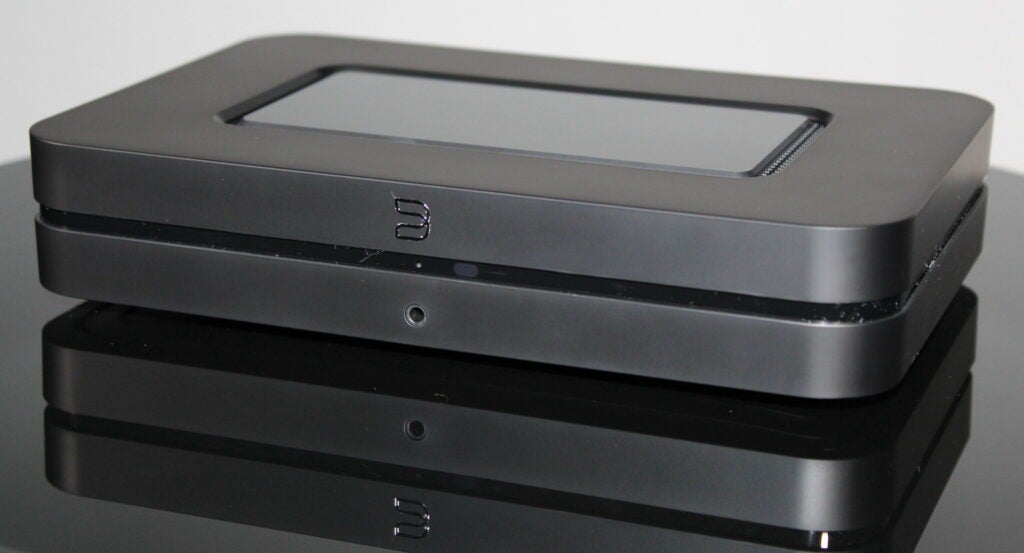
The chassis looks similar to the earlier generations – but, thankfully, it drops the rubberised finish for something that’s sleeker and cleaner. The overall design is based around two matte sections sandwiched either side of a glossy strip – where you’ll find a small indicator LED and an IR sensor. The Node itself measures W220 x H46 x D146mm, and weighs in at 1.09kg.
Connectivity
- HDMI eARC; digital; analogue; USB; Ethernet
- Wi-Fi; Bluetooth aptX HD; AirPlay 2
- Wired and wireless headphone outputs
- Subwoofer output
The Bluesound Node is well endowed when it comes to connectivity, with a host of wired and wireless choices that allow you to connect pretty much anything. Kicking off with the wired connectors, these are primarily located at the rear. Here you’ll find an HDMI eARC connector, allowing you to immediately boost the sound quality of your TV by using an amplifier and speakers connected to the Node.
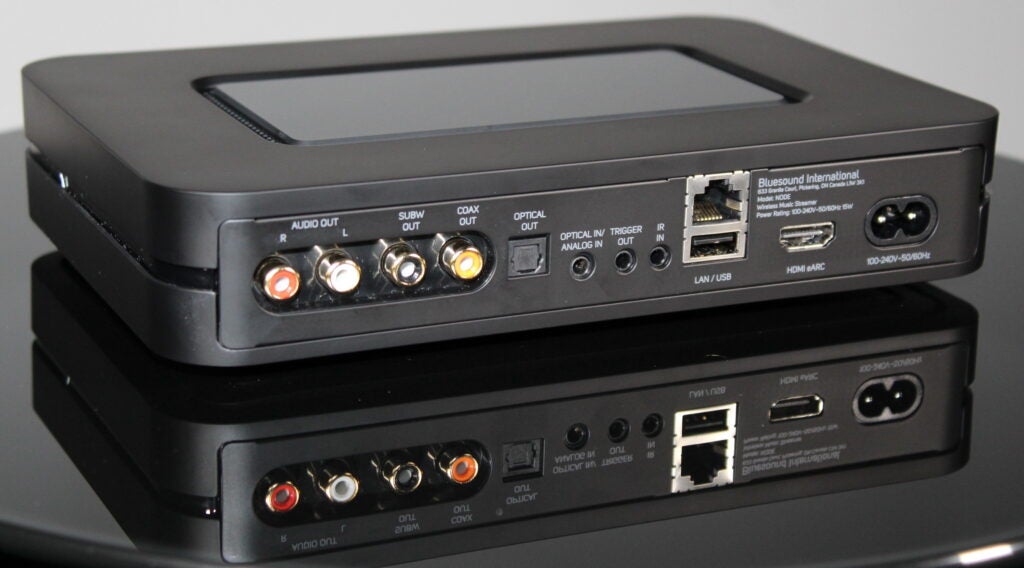
There’s also a dual-function optical digital/analogue input, and coaxial and optical digital outputs, along with stereo RCA outputs for connecting the Node to a power amplifier. There’s a dedicated subwoofer output, along with a trigger out for simultaneously powering up a connected amp when you turn on the Node. There’s also an IR in, a USB Type-A connector, and a Gigabit Ethernet port; plus there’s a 3.5mm jack on the front for connecting a pair of headphones.
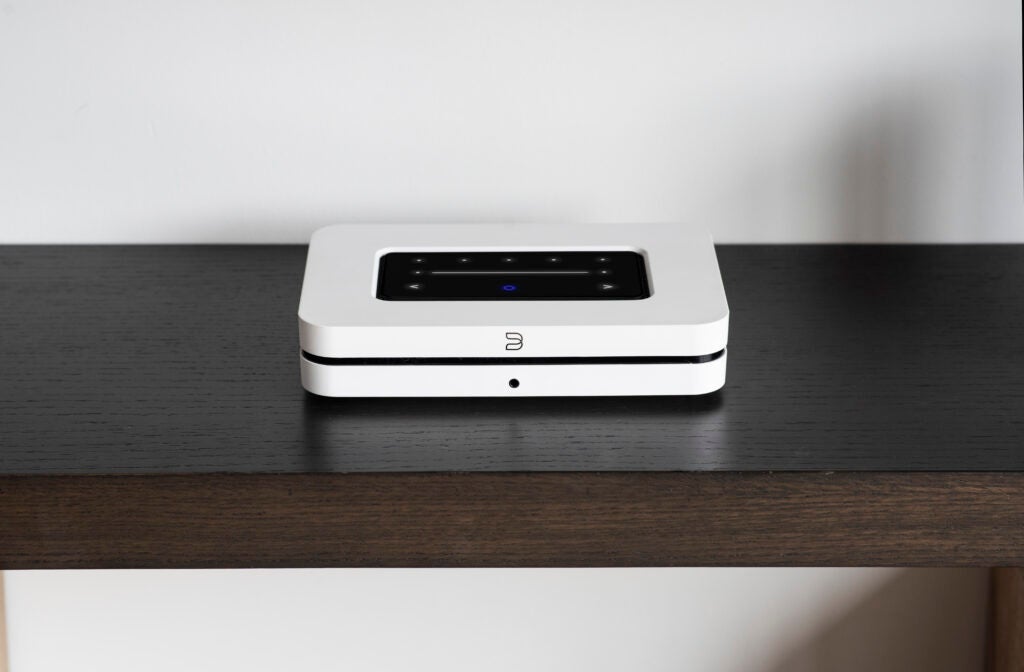
On the wireless side of things there’s dual-band Wi-Fi (802.11ac), enabling you to stream hi-res music to the Node from premium service providers or your own network. There’s also Bluetooth 5.0 aptX HD with two-way connectivity (transmit and receive), allowing you to stream 24-bit audio directly from a phone or tablet, and transmit it back to any paired headphones or speakers. Finally, there’s AirPlay 2 for those with Apple devices, and even a wireless subwoofer output for the Pulse SUB+.
Features
- Quad-core processor and audiophile-grade DAC
- BluOS Controller app
- MQA support
- Multi-room functionality
- Works with Alexa, Google and Siri
The Bluesound Node boasts an impressive array of features, starting with a Texas Instruments PCM 5242 DAC and ARM Cortex A53 quad-core processor, allowing it to handle high-resolution audio up to 24-bit/192kHz. This processing power is combined with the BluOS operating system, which in turn supports controller operating systems from iOS, Android, Windows, and Mac.
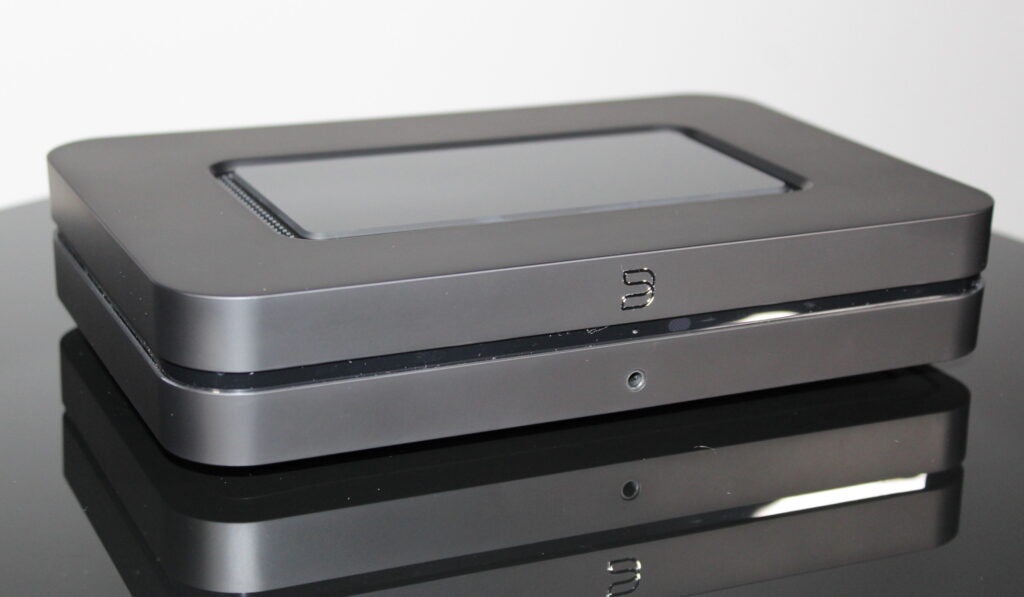
The Node not only supports PCM up to 24/192, but can handle just about any format imaginable, including MQA. In fact, about the only audio format it can’t deal with is DSD, but at least BluOS is capable of identifying DSD files and cross-convert them to FLAC. It also offers every streaming service you can think of, including Tidal, Spotify, and Qobuz, plus there’s internet radio, and any digital music library you have on a computer or external drive.
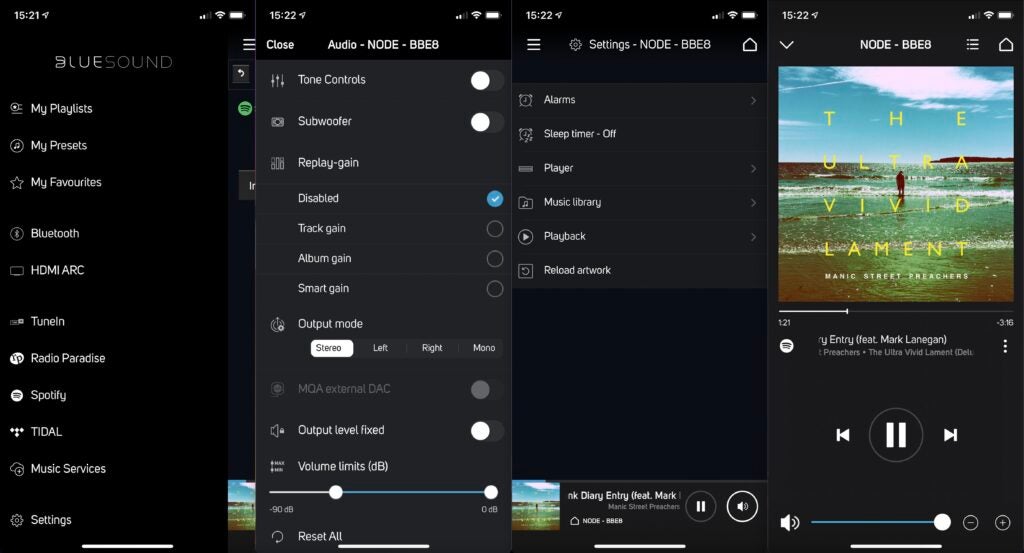
Bluesound has created its own multi-room system based around the excellent BluOS Controller app. This seamlessly connects the Node to multiple Bluesound speakers throughout your home, creating an intuitive multi-room music system. It also has the ability to support up to 64 players in 24-bit hi-res audio, which is impressive even if you probably have nowhere near 64 rooms in your house!
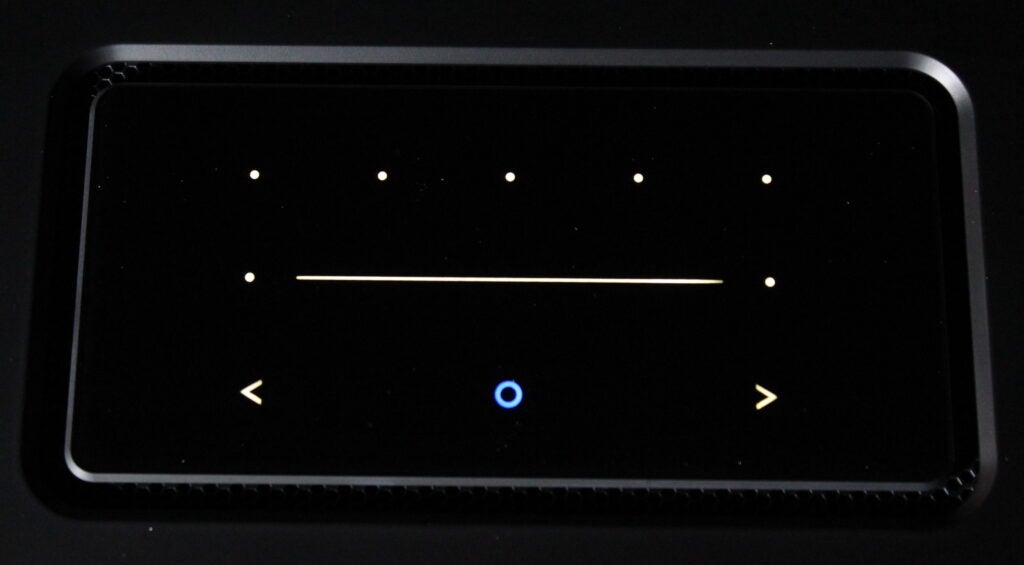
There are extensive control options, including the BluOS Controller app, touch panel controls with presets, voice assistants such as Siri, Alexa, or Google Voice, and even programming your own IR remote. While there’s no included remote, Bluesound offers the optional RC1 controller, and the Node can be integrated into a smart home with full-feature drivers for Lutron, Elan, RTI, Crestron, and other popular home control systems. Finally, the Node is also Roon Ready.
Performance
- AirPlay 2 connectivity
- Deals well with poorer quality audio
- Energetic delivery
The Bluesound Node is simple to set up – but before getting into the nitty-gritty, it’s important to point out this isn’t an all-in-one system; it’s a pre-amp. This means you have to add an amplifier and speakers, or active speakers, for it to work, although if you already have a good pair of passive speakers then you could choose the Bluesound Powernode instead, which is a Node with 80W of two-channel grunt already built-in.
Once you’ve connected the Node to your system (either via the optical, coaxial or analogue outputs), you can then access your Wi-Fi network using the BluOS Controller app – and you’re off to the races. Along with all the music services that the wireless connectivity brings to the party, you can also access files from any connected network drives.
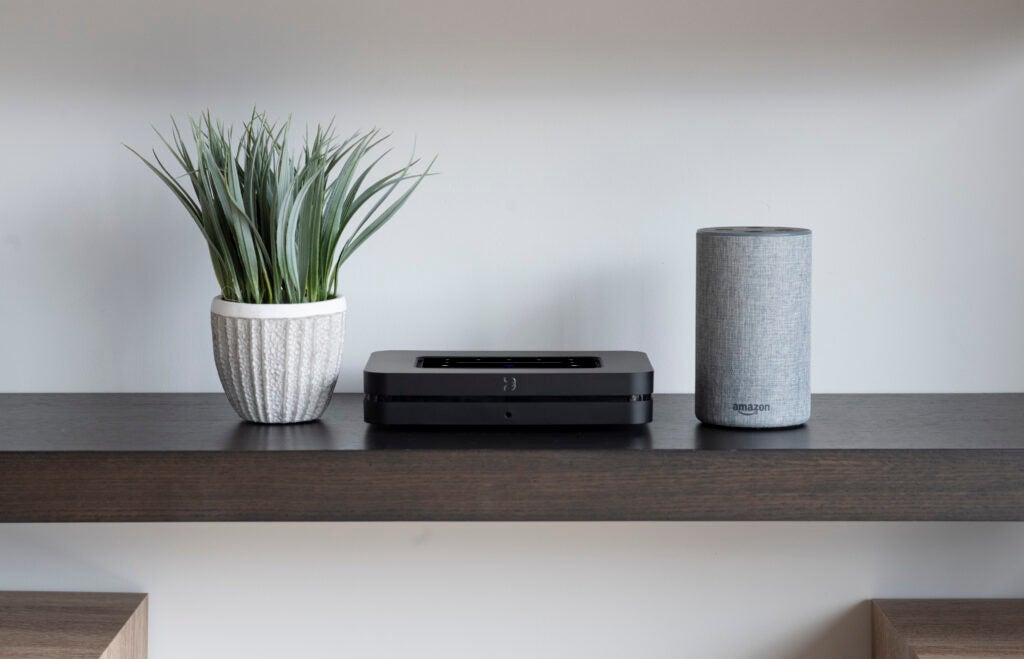
If you’re invested in the Apple ecosystem then you have AirPlay 2 wireless connectivity, plus there’s Bluetooth functionality that not only allows you to stream music from a smartphone or tablet, but also send audio to Bluetooth headphones and speakers. Finally, you can connect any wired sources to the Node, including your TV if it supports ARC/eARC.
BluOS uses a queue-based approach that works well, even if it appears slightly dated compared to newcomers such as Roon – although you have to pay for the latter. The app provides easy access to playlists, presets and favourites, along with all the music streaming and internet radio services, plus Bluetooth and any wired connections.
There’s a host of set-up features, allowing you to adjust the tone controls, turn on the subwoofer output, set the output mode and level plus, of course, adjust the volume. Overall the app proves a highly effective way of controlling the Node, although if you’re the kind of person who prefers using a regular remote control then you can buy the optional RC1.
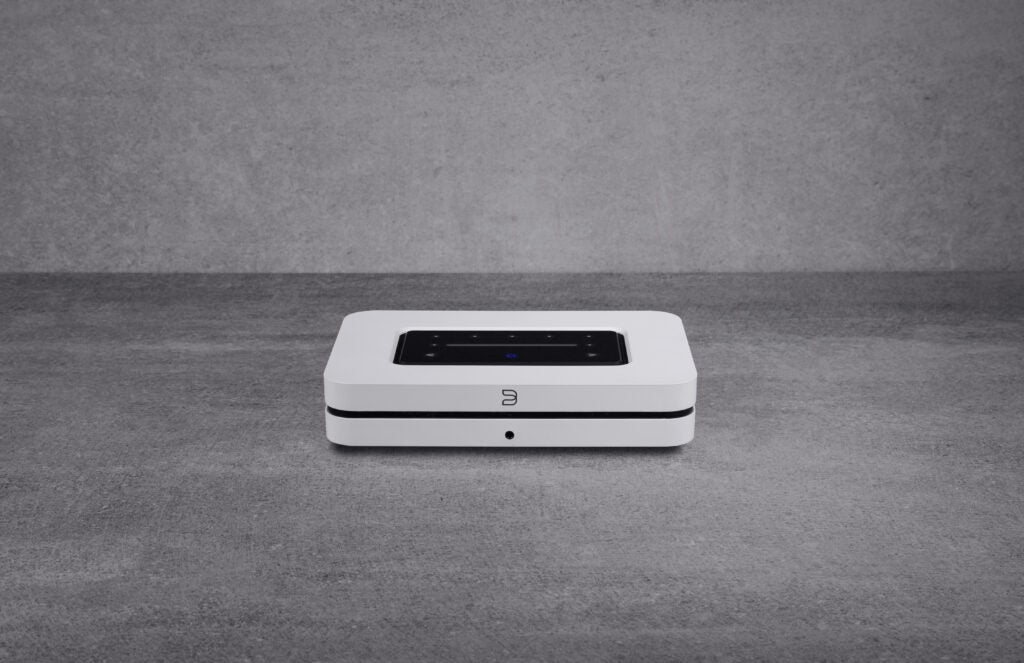
Thanks to its new DAC chip and a well-designed output stage, the Node has wonderful control that allows it to handle all types of recordings – even poor ones. As a result, this streamer is pleasingly forgiving across a varied selection of material, and means you can partner the Node with some very capable equipment without fear of any issues.
The Node not only reveals an ability to adapt to different recordings, but also sports a delivery that’s undeniably energetic, which makes this streamer a lot of fun. It also retains excellent bass detail and overall extension. So, listening to The Ultra Vivid Lament by the Manic Street Preachers was thoroughly engaging as the Node expertly brought out all the layers in the songs.
The Node is also a joy to live with, and during testing everything worked exactly as it was supposed to. Switching between AirPlay and Bluetooth caused no issues, and the same goes for all the wired connections. BluOS could do with a few minor tweaks, but it’s still one of the best operating systems out there, and the Node remains a consummate performer.
Latest deals
Should you buy it?
You want an affordable way of adding Wi-Fi to your Hi-Fi This accomplished high-resolution audio wireless and multi-room streamer not only quickly and easily adds premium music services to your Hi-Fi system, but can also instantly boost the sound quality of your TV thanks to HDMI eARC. Extensive connectivity, and an effective remote app are the icing on the cake.
You desperately want DSD support or hate using a smart device as a remote The Node doesn’t support DSD, although there are ways around this, and there’s no remote control included, although you can buy the optional RC1 from Bluesound.
Final thoughts
The Bluesound Node is well made and easy to set up, with extensive connectivity and an effective remote app. The performance is excellent, the high-resolution audio support extensive, and the multi-room capabilities impressive. There’s every premium streaming service imaginable, and only the lack of DSD support or a dedicated remote control disappoint – but, otherwise, the Bluesound Node is hard to fault.
How we test
We test every music streamer we review thoroughly over an extended period of time. We use industry standard tests to compare features properly. We’ll always tell you what we find. We never, ever, accept money to review a product.
Find out more about how we test in our ethics policy.
Tested over several weeks
Used as main music streamer for review period
Use with a range music streaming services and files
FAQs
Inside the Bluesound Node is a Texas Instruments PCM 5242 DAC.
No you don’t, there’s already one built in. You will need an amplifier to connect it to be speakers though.
Full specs
Jargon buster
AirPlay 2
AirPlay 2 is the second generation of Apple’s proprietary wireless streaming tech, which is built into all of its hardware products (and supported by many others). It’s designed to pass content from your Apple device - music, video and photos - to a compatible receiver over your Wi-Fi network such as a TV, wireless speaker, AV receiver etc.Alexa
Amazon's smart voice assistanteARC
eARC (Enhanced Audio Return Channel) is the update to ARC and it boosts the bandwidth and speed, making room for object-based audio surround formats such as DTS:X and Dolby Atmos to be sent directly to an AV receiver/soundbar.Google Assistant
A voice assistant which is Google’s take on Amazon’s Alexa.Hi-Res Audio
Hi-Res audio is referred to as a standard as well as a marketing term that describes digital audio files of better-than-CD quality (16-bit/44.1kHz).
Multiroom audio
Multi-room refers to the act of grouping wireless audio systems together to play/control music throughout a home. For example, Multi-room systems can allow for the same piece of music to be played on all connected systems, or different music played on each individual speaker.



